Snow Blower Vs Shovel – Selecting the Right Snow Clearing Tool
- January 29, 2024
- 0 comment
Choosing between a snow blower and a shovel comes down to evaluating your specific needs, like the amount of snow you typically face and the area you need to clear. Consider each tool’s pros and cons, such as the snow blower’s efficiency versus the shovel’s simplicity, factoring in your budget, physical effort, storage space, and environmental impact. This comparison aims to arm you with the knowledge to pick the right tool for a safe and efficient snow-clearing season.
Snow Blower The Powerhouse
A snow blower, ingeniously crafted to tackle the daunting task of snow removal, operates by efficiently scooping up snow and expelling it to a designated area, thus streamlining the process of clearing walkways, driveways, and larger expanses. These versatile machines are offered in both electric models, which are praised for their quieter operation and absence of emissions, and gas-powered versions, known for their robust performance and independence from power cords, making them suitable for extensive areas.

With a range of sizes and capacities available, snow blowers are adeptly designed to cater to a broad spectrum of requirements, from residential properties grappling with moderate snowfall to larger estates or commercial spaces besieged by severe winter conditions. By significantly diminishing the physical exertion and time investment traditionally associated with snow clearing, snow blowers stand out as a formidable ally against the challenges posed by heavy snowfall, providing a practical and effective solution tailored to diverse needs and property dimensions.
Snow Shovel The Classic Choice
The snow shovel, emblematic of winter’s age-old battle against the elements, remains a quintessential tool in the arsenal of those braving the snowy months. Rooted in simplicity, this manual instrument demands physical exertion as users lift and relocate snow, offering a straightforward, cost-effective solution for managing lighter snowfalls and smaller-scale clearing tasks. Despite its traditional nature, the snow shovel has evolved, embracing a plethora of designs that cater to a wide range of user needs and preferences.
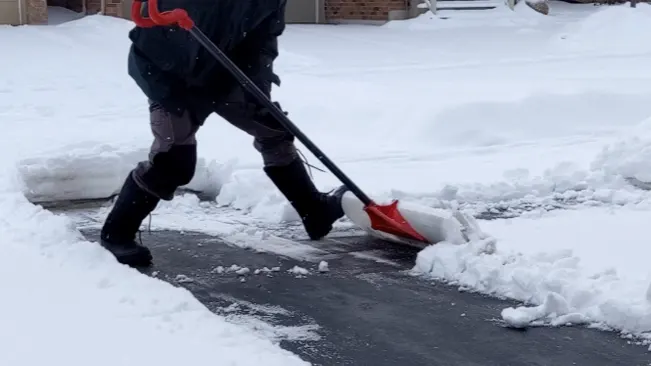
From the rudimentary straight-handled models to advanced ergonomic versions equipped with curved shafts and strategically angled blades, these shovels are meticulously crafted to minimize physical discomfort and reduce the risk of strain on the user’s back and arms. This diversity not only enhances the user experience but also democratizes snow removal, ensuring that regardless of one’s physical strength or financial constraints, there remains an accessible and efficient means to maintain safety and mobility around one’s dwelling during the winter season.
Factors to Consider
When choosing between a snow blower and shovel, consider the snowfall severity, area size, your physical condition, storage space, budget, and environmental preferences. Snow blowers offer efficiency for heavy snow and large areas but are costlier and bulkier, while shovels are more affordable and physically demanding. Decide based on your needs and priorities for winter snow removal.
| Feature | Snow Blower | Snow Shovel |
|---|---|---|
| Efficiency | High – Clears large areas quickly | Lower – Best for smaller areas |
| Physical Effort | Less – Machine does most of the work | More – Requires manual lifting and moving |
| Storage Space | More – Larger and requires ample storage | Less – Compact and easy to store |
| Maintenance | Higher – Needs regular maintenance (fuel, lubrication) | Minimal – Simple care and occasional replacement |
| Cost | Higher – More expensive initial investment | Lower – More affordable |
| Environmental Impact | Varies – Electric models are eco-friendlier than gas-powered | Minimal – No emissions, manual operation |
| Snow Volume Handling | Better for heavy snowfall | Suitable for light to moderate snowfall |
| Area Suitability | Ideal for large driveways and extensive areas | Best for small driveways, walkways, and decks |
| Ease of Use | User-friendly but requires operation knowledge | Simple and straightforward to use |
| Versatility | Multiple settings for different snow conditions | One-size-fits-all approach, less versatile |
Snowfall and Area Size
In choosing between a snow blower and a shovel for winter snow removal, the key factors are the expected snow volume and the size of the area to be cleared. Heavy snowfalls and large areas, such as expansive driveways, are more efficiently managed with a snow blower, which can save significant time and physical effort.
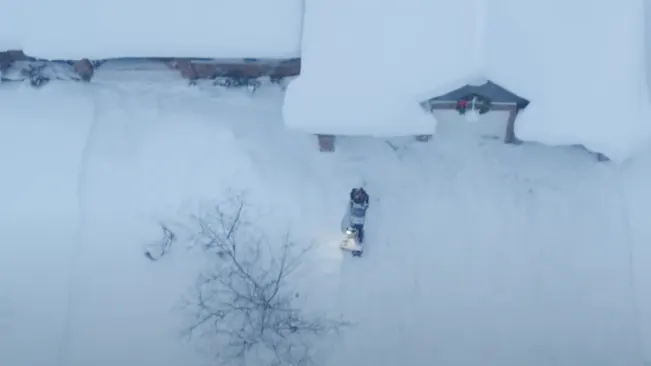
For lighter snowfalls or smaller spaces, a traditional snow shovel is adequate, offering simplicity, exercise, and precision in clearing paths and decks. This choice not only reflects practicality and efficiency but also personal preference in managing winter’s challenges.
Physical Effort and Health
Take into account your physical well-being and capacity for exertion when choosing between a snow blower and a shovel for snow removal. The act of shoveling can be demanding and carries the potential for injury, particularly for individuals with existing health issues, if proper techniques are not employed.
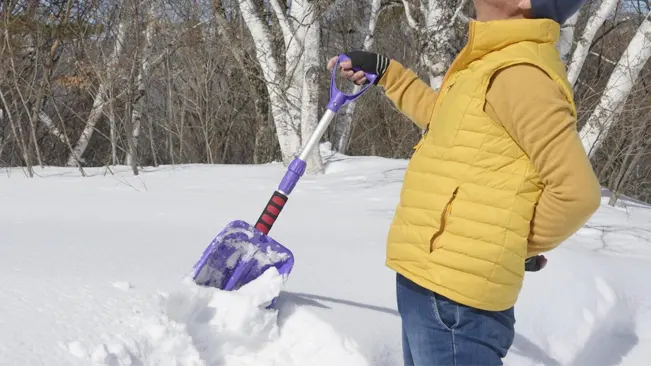
On the other hand, although snow blowers are bulkier and can be more challenging to handle, they significantly reduce the need for physical labor, potentially offering a more secure alternative for those concerned about the physical strain associated with snow clearing tasks.
Storage and Maintenance
When choosing between snow blowers and shovels for snow removal, it’s important to consider storage and maintenance. Snow blowers, being bulkier, require more space and consistent upkeep, including engine maintenance and part lubrication, to ensure efficiency.
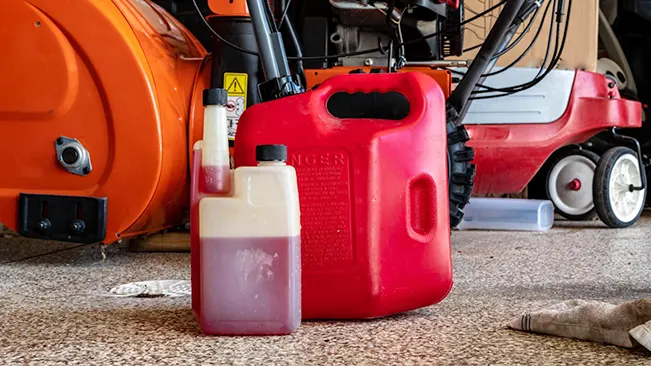
Shovels, in contrast, are compact and low-maintenance, easily stored in small spaces with minimal care needed. This distinction makes it essential to weigh your storage capabilities and readiness for maintenance when selecting the most suitable tool for managing winter snow.
Environmental Impact
Electric snow blowers are a greener choice for snow removal, avoiding the emissions of gas models, but they might lack the power to tackle heavy snow. Manual snow shovels, while the most environmentally benign option, demand considerable physical effort, making them labor-intensive. This necessitates a balance between eco-friendliness, effectiveness, and the physical demands of clearing snow, whether it’s a light covering on a walkway or a dense accumulation on a driveway.
Budget
When considering the budgetary aspects of snow removal tools, snow blowers are generally more expensive upfront due to their mechanical complexity and efficiency in handling large volumes of snow. They also incur ongoing costs for maintenance, fuel (for gas models), or electricity (for electric models). Shovels, in contrast, are much more affordable initially and have negligible ongoing costs, though they require more manual effort and time to use effectively.
Here’s a comparative table highlighting the budgetary considerations:
| Aspect | Snow Blower | Snow Shovel |
|---|---|---|
| Initial Cost | High – due to mechanical components | Low – simple design |
| Maintenance Cost | Ongoing – fuel/electricity, repairs | Minimal – occasional replacement |
| Effort & Time | More effort, more time-consuming | More effort, more time consuming |
| Long-term Value | High efficiency, higher initial investment | Cost-effective, higher physical demand |
Making Your Choice
When choosing between a snow blower and a shovel, weigh the pros and cons of each based on your specific situation. Consider the typical weather conditions in your area, your physical health, the size of the area you need to clear, storage space, environmental concerns, and your budget.
| Snow Blower | Pros | Cons |
|---|---|---|
| Efficiency | Quickly clears large areas, ideal for heavy snowfalls. | Higher initial and ongoing costs including purchase, fuel, and maintenance. |
| Physical Effort | Reduces exertion with features like powered propulsion, making it easier for those with physical limits. | Requires ample storage space, challenging for those with limited room. |
| Adjustability | Handles various snow conditions effectively with adjustable settings. | Needs regular maintenance like engine checks and lubrication, which may require time or professional services. |
| Snow Shovel | Pros | Cons |
|---|---|---|
| Cost | Affordable with minimal purchase and maintenance costs, economically appealing. | Manual effort can be strenuous, leading to potential fatigue during heavy snowfalls or over large areas. |
| Storage | Compact design allows for easy storage in small spaces. | Takes longer to clear snow compared to a snow blower, requiring more time commitment. |
| Environmental Impact | No need for fuel or electricity, minimal environmental impact, ideal for eco-conscious users. | Higher risk of strain and injury due to repetitive motion and physical exertion, even with proper technique. |
Conclusion
Selecting the right snow clearing tool is a personal decision influenced by various factors, including efficiency, physical ability, and environmental impact. Whether you choose the mechanical might of a snow blower or the traditional simplicity of a shovel, your decision should align with your needs, making snow removal as manageable as possible during the winter months. Remember, the right tool is the one that makes your life easier and keeps you safe while tackling the snowy season.
FAQs
- What are the main differences between a snow blower and a snow shovel?
A snow blower is a machine that scoops up snow and blows it to the side, making it ideal for clearing large areas and heavy snowfall. A snow shovel requires manual effort to lift and move snow, suitable for smaller areas and lighter snow. - Is a snow blower or shovel better for heavy snowfall?
A snow blower is generally better for heavy snowfall, as it can clear large volumes of snow more efficiently without the physical strain associated with shoveling. - Can I use a snow shovel for large driveways?
Yes, you can use a snow shovel for large driveways, but it will require more time and physical effort compared to using a snow blower. - Are snow blowers difficult to maintain?
Snow blowers require regular maintenance, such as checking the engine, changing the oil, and ensuring the parts are well-lubricated. The level of difficulty can vary based on the model and type of snow blower. - How do I choose the right size snow blower for my property?
Consider the size of the area you need to clear and the typical snowfall depth. Larger areas and heavier snowfalls require a more powerful snow blower with a wider clearing width. - Are there eco-friendly options for snow blowers?
Yes, electric snow blowers offer an eco-friendly alternative to gas-powered models. They are quieter and do not emit fumes, but may be less powerful and have a limited range based on battery life or cord length. - What are the health risks associated with using a snow shovel?
Shoveling snow can be physically demanding and may increase the risk of back injuries, heart strain, and muscle soreness, especially if not done with proper technique or by individuals with pre-existing health conditions. - How can I make shoveling snow easier and safer?
Use an ergonomic shovel, lift with your legs instead of your back, take frequent breaks, stay hydrated, and shovel multiple times during a heavy snowfall to avoid moving large amounts of snow at once. - Can a snow blower be used on all types of surfaces?
Most snow blowers can be used on various surfaces, but it’s important to choose a model suitable for your specific surface type, such as gravel, to avoid picking up and throwing rocks. - What should I do if I have limited storage space but need a snow blower?
Consider a compact or single-stage snow blower, which takes up less storage space. Alternatively, some models have foldable handles or can be disassembled for easier storage.
Which do you prefer when the snow starts to pile up: the snow blower or the shovel? Drop your choice and tips in the comments below—we love hearing from you! Share this article to help others gear up for winter!

Charles Hayes
Forestry AuthorI'm Charles Hayes, I bring over 15 years of specialized expertise in landscaping and woodworking, blending artistic design with sustainable environmental stewardship. My career, fueled by a profound passion for the natural world, encompasses extensive education and hands-on experience in creating harmonious, eco-friendly outdoor spaces and responsibly managing forest resources. Recognized for my professional standing, I am committed to continuous learning and certification in cutting-edge practices. My expertise is not only reflected in my work but also in my contributions to community projects, educational workshops, and collaborations with industry leaders. As an authoritative voice in my field, I strive to share knowledge and promote environmentally conscious approaches, making me a trusted resource in landscaping and forestry.

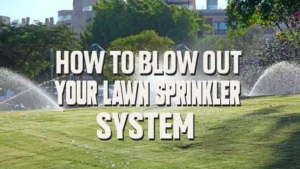











Leave your comment